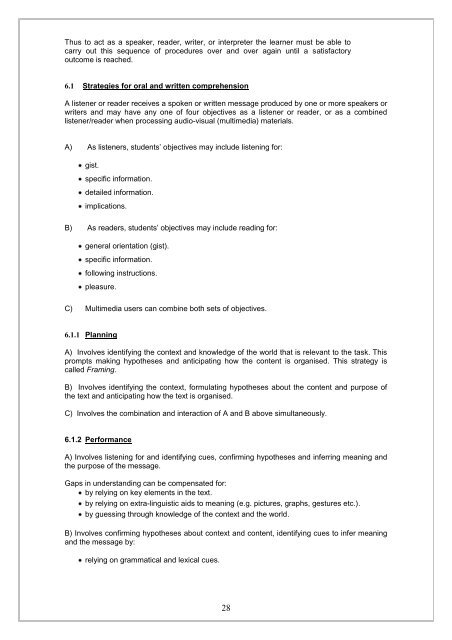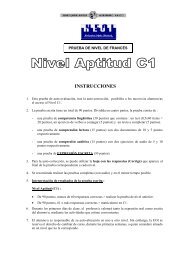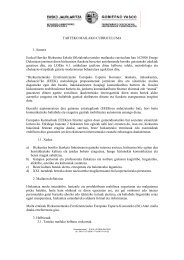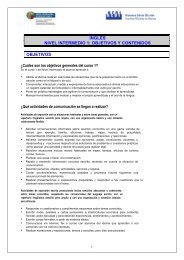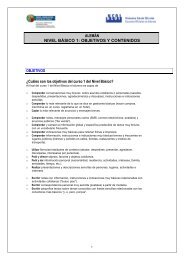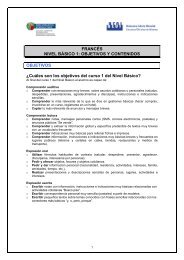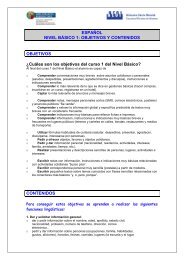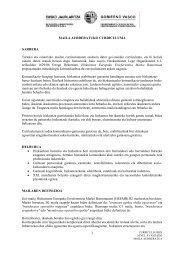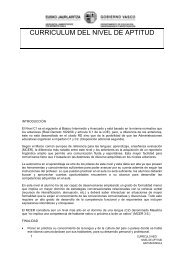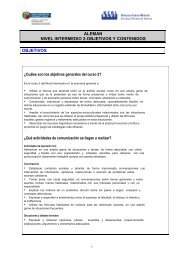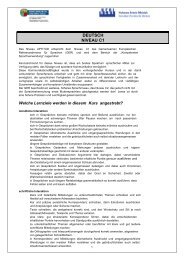C1 – Course Syllabus - Escuelas Oficiales de Idiomas del País Vasco
C1 – Course Syllabus - Escuelas Oficiales de Idiomas del País Vasco
C1 – Course Syllabus - Escuelas Oficiales de Idiomas del País Vasco
You also want an ePaper? Increase the reach of your titles
YUMPU automatically turns print PDFs into web optimized ePapers that Google loves.
Thus to act as a speaker, rea<strong>de</strong>r, writer, or interpreter the learner must be able to<br />
carry out this sequence of procedures over and over again until a satisfactory<br />
outcome is reached.<br />
6.1 Strategies for oral and written comprehension<br />
A listener or rea<strong>de</strong>r receives a spoken or written message produced by one or more speakers or<br />
writers and may have any one of four objectives as a listener or rea<strong>de</strong>r, or as a combined<br />
listener/rea<strong>de</strong>r when processing audio-visual (multimedia) materials.<br />
A) As listeners, stu<strong>de</strong>nts‟ objectives may inclu<strong>de</strong> listening for:<br />
gist.<br />
specific information.<br />
<strong>de</strong>tailed information.<br />
implications.<br />
B) As rea<strong>de</strong>rs, stu<strong>de</strong>nts‟ objectives may inclu<strong>de</strong> reading for:<br />
general orientation (gist).<br />
specific information.<br />
following instructions.<br />
pleasure.<br />
C) Multimedia users can combine both sets of objectives.<br />
6.1.1 Planning<br />
A) Involves i<strong>de</strong>ntifying the context and knowledge of the world that is relevant to the task. This<br />
prompts making hypotheses and anticipating how the content is organised. This strategy is<br />
called Framing.<br />
B) Involves i<strong>de</strong>ntifying the context, formulating hypotheses about the content and purpose of<br />
the text and anticipating how the text is organised.<br />
C) Involves the combination and interaction of A and B above simultaneously.<br />
6.1.2 Performance<br />
A) Involves listening for and i<strong>de</strong>ntifying cues, confirming hypotheses and inferring meaning and<br />
the purpose of the message.<br />
Gaps in un<strong>de</strong>rstanding can be compensated for:<br />
by relying on key elements in the text.<br />
by relying on extra-linguistic aids to meaning (e.g. pictures, graphs, gestures etc.).<br />
by guessing through knowledge of the context and the world.<br />
B) Involves confirming hypotheses about context and content, i<strong>de</strong>ntifying cues to infer meaning<br />
and the message by:<br />
relying on grammatical and lexical cues.<br />
28


